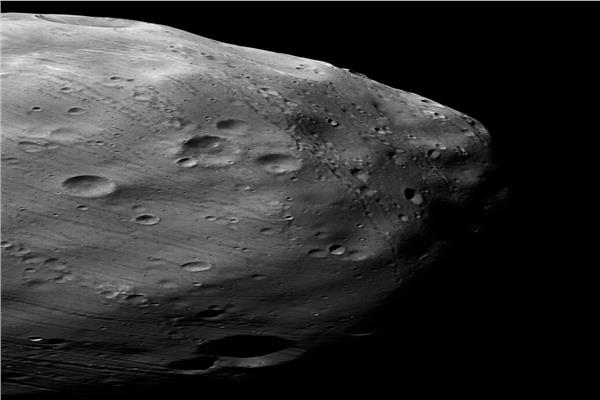The Mars Express spacecraft dug deeper than ever, Phobos, the moon of Mars, and found clues to unknown structures that could be clues to the moon’s origin.
Mars Express, a 19-year veteran spacecraft orbiting Mars, flew 51.6 miles (83 km) from Phobos on September 22, 2022 and was able to study what’s beneath the lunar surface using a developed on its MARSIS instrument (Radar of the advanced subsurface and ionosphere of Mars).
– Drought puts 22 million people at risk of starvation in the Horn of Africa
Understanding the internal structure of Phobos could be a key to solving the mystery of its origin.
“We are still in an early stage of our analysis, but we have already seen potential signs of previously unknown features beneath the lunar surface,” said Andrea Cecchetti, member of the MARSIS scientific team of the Italian National Institute of Astrophysics (INAF) in a statement. . .
In 1877, the American astronomer Asaph Hall discovered two small moons orbiting Mars, which were later called “Phobos” and “Deimos”, meaning “fear” and “dismay” respectively, among the Greeks.
The recent flyby of this larger moon than Mars provided the perfect opportunity to test one of the spacecraft’s first upgrades.
The MARSIS instrument was originally designed to study the internal structure of Mars and, as a result, is designed for use at a typical distance between the spacecraft and the planet’s surface – more than 250 km.
But it recently received a major software update that allows it to be used at much closer distances which could help shed light on Phobos’ mysterious origin.
Andrea said: “During this flight, we used MARSIS to study Phobos at a close range of 83 km. The approach allows us to study its structure in more detail and identify important features that we could not have seen from afar. In the future. ” .
“We didn’t know if this was possible,” said Simon Wood, a Mars Express flight controller at the European Space Agency’s ESOC Operations Center, who oversaw the loading of the new software onto the spacecraft. Only the latest modifications to the spacecraft were successful hours before the flight. “
MARSIS is famous for its role in discovering signs of liquid water on the Red Planet and sends low frequency radio waves to Mars, or “Phobos”, using a 40 meter antenna.
Most of these waves are reflected off the surface of the object, but some pass through it and are reflected at the boundaries between the different layers of material beneath the surface.
By examining the reflected signals, scientists can map the structure below the surface and study properties such as the thickness and composition of the material.
For Mars, this can reveal several layers of ice, soil, rock, or water. But the internal structure of Phobos is more mysterious, and an update to MARSIS could provide important information.
“The question of whether the two small moons of Mars were captured by asteroids or were made of material ripped from Mars during the collision is an open question,” says ESA Mars Express scientist Colin Wilson. Two asteroids, but the way they orbit Mars might say otherwise. “
The image obtained by the MARSIS instrument, the so-called radargram (radar image of a mineral deposit or planetary surface), was produced during the flight of Phobos on 23 September 2022.
The solid light line shows the echo of the lunar surface. Bottom reflections are either “clutter” caused by features on the lunar surface or, more interestingly, signs of potential structural features below the surface.
Across the narrow path on Phobos, the radargram shows a bright line divided into two parts: called AC and DF.
The AC section was acquired using the old MARSIS software, while the tool’s updated software was used to acquire the DF section, which shows much more detail, according to Carlo Nina, a MARSIS software engineer at Enginium, an engineering consulting firm in Milan , Italy.


